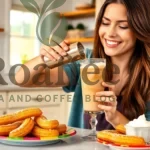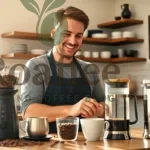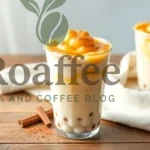We’ve all been there – standing in our kitchen with a tea bag or loose leaves wondering if we’re doing it right. The truth is most people never learn the proper way to brew tea and end up with bitter overextracted cups or weak flavorless disappointments.
Brewing the perfect cup of tea isn’t rocket science but it does require understanding a few key principles. Water temperature timing and ratios make all the difference between a mediocre cup and an exceptional one that rivals your favorite café. Whether you’re working with delicate green tea robust black tea or aromatic herbal blends each variety has its own sweet spot.
We’re about to share the techniques that’ll transform your daily tea ritual from guesswork into a reliable system. Once you master these fundamentals you’ll never have to suffer through another disappointing cup again.
Essential Equipment for Tea Brewing
Quality equipment makes the difference between mediocre tea and exceptional brews. We’ll explore the essential tools that ensure consistent results every time.
Tea Infuser Options
Tea infusers give loose leaf tea the space it needs to expand and release its full flavor potential. We recommend choosing an infuser that allows tea leaves to move freely during steeping.
Mesh ball infusers work well for most teas but can restrict leaf expansion. Fine mesh prevents small particles from escaping while larger holes accommodate bigger leaves.
Basket infusers offer more room for tea leaves to unfurl completely. These wide containers sit perfectly in most mugs and teapots. Stainless steel versions last longer than plastic alternatives.
Paper filters provide excellent filtration for delicate teas. Single-use filters eliminate cleanup but create waste. We suggest using them for teas with very fine particles that might escape other infusers.
Built-in strainers come integrated into many teapots. These permanent fixtures save space and reduce the risk of losing separate infusers. Glass teapots with removable strainers combine convenience with visual appeal.
Choosing the Right Teapot
Teapot material significantly impacts your tea’s flavor and heat retention. We’ve found that different materials suit different tea types and brewing preferences.
Ceramic teapots maintain steady temperatures without affecting tea flavor. Their neutral properties work well with all tea varieties. Glazed ceramic cleans easily and resists staining from darker teas.
Glass teapots let you watch the brewing process unfold. Heat-resistant borosilicate glass handles temperature changes without cracking. These teapots showcase flowering teas and colorful herbal blends beautifully.
Cast iron teapots retain heat exceptionally well for extended brewing sessions. Their heavy construction keeps tea warm for hours. We recommend using them primarily for black teas and robust blends.
Stainless steel teapots heat quickly and distribute temperature evenly. These durable options resist dents and scratches. Professional kitchens often prefer stainless steel for its reliability and easy maintenance.
Size matters when selecting your teapot. Individual servings require 8-12 ounce teapots while group brewing calls for 24-32 ounce vessels. We suggest matching teapot size to your typical tea consumption habits.
Water Temperature Tools
Precise water temperature control separates good tea from great tea. We use these tools to achieve optimal brewing temperatures consistently.
Electric kettles with temperature control offer the most precision for serious tea brewers. Digital displays show exact temperatures while preset buttons target exact tea types. We find these invaluable for delicate white and green teas.
Instant-read thermometers provide accurate readings for any kettle. Digital models respond quickly while analog versions require no batteries. Keep the probe clean to ensure accurate temperature measurements.
Temperature guide charts help memorize optimal ranges for different tea types. We recommend keeping these reference tools nearby during your learning phase.
| Tea Type | Optimal Temperature | Steeping Time |
|---|---|---|
| White Tea | 160-185°F | 1-3 minutes |
| Green Tea | 175-185°F | 2-3 minutes |
| Oolong Tea | 185-205°F | 3-5 minutes |
| Black Tea | 200-212°F | 3-5 minutes |
| Herbal Tea | 212°F | 5-7 minutes |
Variable temperature kettles let you set precise temperatures for different teas. These appliances remember your preferences and heat water to exact specifications. We consider them essential for anyone serious about tea brewing.
Stovetop kettles work with temperature monitoring for budget-conscious brewers. Remove the kettle from heat when your thermometer reaches the target temperature. This method requires more attention but produces excellent results.
Types of Tea and Their Brewing Requirements

Understanding the exact brewing requirements for each tea type will transform your tea drinking experience from ordinary to extraordinary. Each variety demands unique temperature and timing considerations to unlock its full flavor potential.
Black Tea Brewing Basics
Black tea thrives with near-boiling water at approximately 200°F (90°C-93°C). We recommend using 5-6 grams of tea leaves per 100ml of water and steeping for 3 to 5 minutes to achieve optimal extraction. The robust processing of black tea leaves requires this higher temperature to release their full-bodied flavors and characteristic malty notes.
Timing plays a crucial role in preventing bitterness from over-extraction. Traditional Western brewing methods work excellently with black tea, though you can also explore the Chinese Gong Fu Cha technique for multiple short infusions that reveal evolving flavor profiles. Remove the tea leaves promptly after steeping to maintain the perfect balance between strength and smoothness.
Green Tea Brewing Basics
Green tea requires a gentler approach with cooler water temperatures between 160-185°F (71-85°C). We use the same 5-6 grams per 100ml ratio but dramatically reduce steeping time to just 1-2 minutes. This delicate handling preserves the tea’s fresh, grassy characteristics and prevents the bitter compounds from dominating the cup.
Brief leaf washes before the main steeping can coax out subtle flavor notes that make green tea so prized. The lower processing level of green tea leaves means they release their essence quickly, making precise timing essential for achieving that perfect balance of vegetal sweetness and clean finish.
White Tea Brewing Basics
White tea showcases its delicate nature through extended steeping times of 4 to 15 minutes using water heated to approximately 185°F (85°C). We maintain the standard 5-6 grams per 100ml measurement while allowing this minimally processed tea the time it needs to unfold its subtle complexities. The gentle cooling of water from boiling point helps preserve the tea’s natural sweetness and light character.
This extended steeping period allows the silver-budded leaves to gradually release their honey-like flavors and floral aromatics. White tea’s minimal processing means the leaves retain their natural structure, requiring patience to extract the full spectrum of delicate flavors that make this tea so treasured.
Oolong Tea Brewing Basics
Oolong tea demands hot water at 200°F (95°C or higher) with 4-5 grams per 100ml and steeping times ranging from 1 to 9 minutes depending on the exact variety. We particularly recommend the Gong Fu Cha method with multiple short infusions that allow you to experience the tea’s evolving character through successive steepings. Each infusion reveals different layers of flavor, from initial floral notes to deeper roasted undertones.
The partial oxidation process of oolong creates complex flavor compounds that respond beautifully to hot water extraction. Multiple short steeps prevent over-extraction while allowing you to explore the full range of flavors that make oolong one of the most sophisticated tea categories.
Herbal Tea Brewing Basics
Herbal teas require fully boiling water at 200°F (95°C or higher) and approximately 5 minutes of steeping time to extract their full medicinal and flavor benefits. Since herbal infusions are not true teas from the Camellia sinensis plant, they need higher temperatures and longer extraction times to release their beneficial compounds and robust flavors. The quantity varies depending on the exact herbs used, but we generally follow package recommendations for optimal results.
These plant-based infusions contain different compounds than traditional teas, requiring the full heat of boiling water to break down cell walls and release essential oils, vitamins, and minerals. The extended steeping time ensures you capture all the therapeutic properties and distinctive flavors that make herbal teas both delicious and beneficial.
Water Quality and Temperature Guidelines
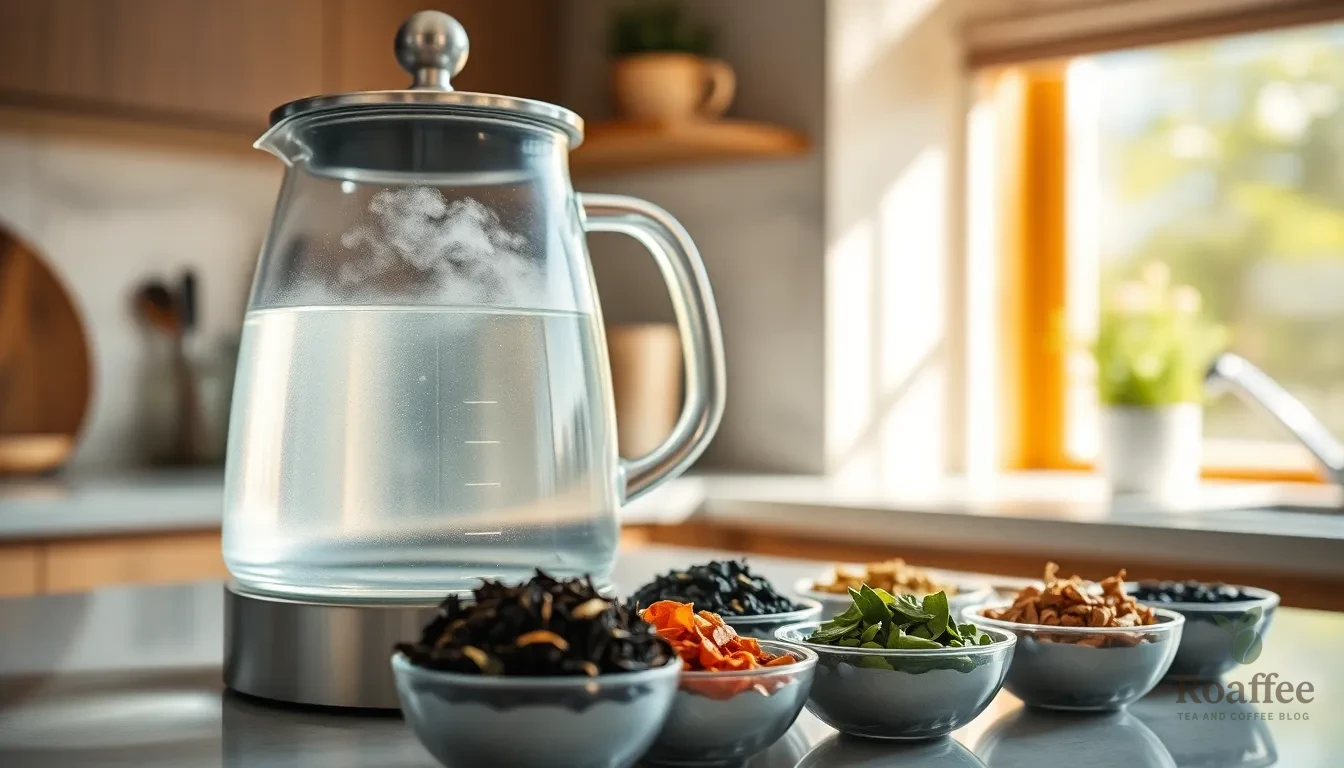
We cannot emphasize enough how crucial water quality and temperature are for brewing exceptional tea. These two factors work together to determine whether your tea will taste flat and bitter or vibrant and perfectly balanced.
Best Water for Tea Brewing
We recommend using tap or filtered tap water rather than bottled water for brewing tea. Bottled water often negatively affects taste and harms the environment, making it a poor choice for tea enthusiasts.
Your water should meet exact characteristics for optimal tea brewing:
- Hardness: 40-120 ppm (4-8 dH) — excessive hardness can flatten tea flavor
- Total Dissolved Solids (TDS): 100-300 ppm
- pH: Neutral, between 6 and 8 (tea itself is slightly acidic when brewed)
- Chlorine level: Should be as close to zero as possible to avoid off-flavors
Using a high-quality water filter like EcoPro improves taste by removing chlorine and reducing limescale buildup. This investment pays dividends in every cup you brew.
Temperature Requirements by Tea Type
Water temperature critically affects flavor extraction from tea leaves, and different teas require exact temperatures to unlock their full potential:
| Tea Type | Ideal Water Temperature (°F) | Notes |
|---|---|---|
| Black Tea | 212 (full boil) | Robust leaves need boiling water for full flavor development |
| Oolong Tea | 190-195 | Between green and black; hotter water extracts deep flavors without bitterness |
| Green Tea | 140-180 | Lower temperature to avoid bitterness; delicate and umami flavors are emphasized. Specialty greens like Gyokuro need about 140°F |
| White Tea | 175-180 | Similar to green tea, requires gentler temperatures for delicate flavors |
Letting boiling water cool a few minutes before steeping more delicate teas helps avoid scalding the leaves and prevents bitterness from overwhelming the subtle flavors.
How to Achieve Perfect Water Temperature
We achieve precise water temperature through several reliable methods that ensure consistency in every brew.
Use a temperature-controlled kettle if possible for precision brewing. These kettles eliminate guesswork and deliver exact temperatures every time.
For delicate teas like green and white varieties, boil water then let it cool to target temperature before steeping. This approach prevents scorching the leaves while still extracting optimal flavors.
For black and herbal teas, use freshly boiled water directly from the kettle. These robust teas benefit from the full heat to unlock their complex flavor profiles.
At higher altitudes, water boils at lower temperatures due to reduced atmospheric pressure. Adjust steeping times accordingly or accept the slightly lower brewing temperature.
Experiment within recommended temperature ranges to suit personal taste preferences. Start with our guidelines and fine-tune based on your palate preferences.
Ingredients
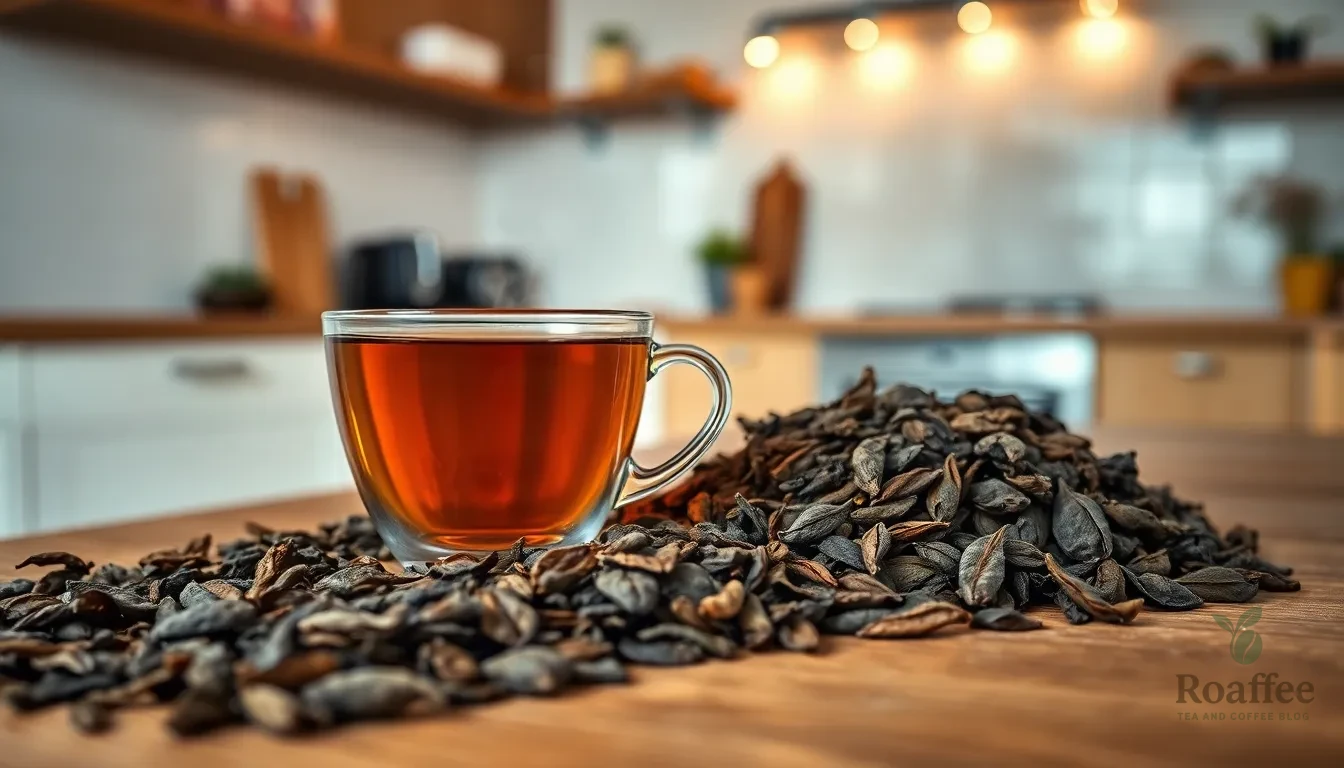
Now that we have covered the essential equipment and techniques, let’s focus on the two fundamental ingredients that form the foundation of every great cup of tea. The quality and proper selection of these components will directly impact your brewing success.
Tea Selection Guide
We recommend selecting high-quality loose leaf tea or tea bags based on your personal preference and brewing method. Each tea type requires exact amounts and handling to achieve optimal flavor extraction.
| Tea Type | Tea Leaves Amount | Water Temperature | Steeping Time |
|---|---|---|---|
| Black | 1 tsp per 6 oz cup | Full boil (212°F/100°C) | 3-5 minutes |
| Green | 1 tsp per 6 oz cup | Steaming (175-180°F) | 1-2 minutes |
| White | 2 tsp per 6 oz cup | Steaming (175-180°F) | 2-3 minutes |
| Oolong | 1 tsp per 6 oz cup | Almost boiling (195°F) | 2-3 minutes |
| Pu-erh | 1 heaping tsp/6 oz | Full boil (212°F) | 5 minutes |
| Herbal | Varies (usually 1 tsp) | Full boil (212°F) | 5-7 minutes or more |
Oolongs require approximately 50% more tea leaves per cup than other varieties and excel when used for multiple infusions. This characteristic makes them particularly economical for tea enthusiasts who enjoy extended brewing sessions.
Water Ratios and Measurements
We always use fresh, filtered or artesian water as our second essential ingredient. Avoid distilled or stale tap water since these can introduce off-flavors from chlorine or minerals that will compromise your tea’s taste.
Our standard measurement calls for 1 teaspoon of loose tea leaves per 6 to 8 oz cup of water. Adjust this ratio based on your desired strength or follow exact instructions for your chosen tea variety.
Fresh, cold filtered or artesian water produces the best results because it eliminates chlorine and mineral flavors that can mask the tea’s natural characteristics. We recommend preheating your teapot or vessel by swirling hot water inside, then discarding it to maintain optimal brewing temperature and prevent cracking when adding hot water.
Water temperature serves as the critical factor that determines extraction quality. Use boiling water (212°F) for black, pu-erh, and herbal teas, while slightly cooler temperatures work better for green, white, and oolong teas to prevent burning and bitterness.
Instructions
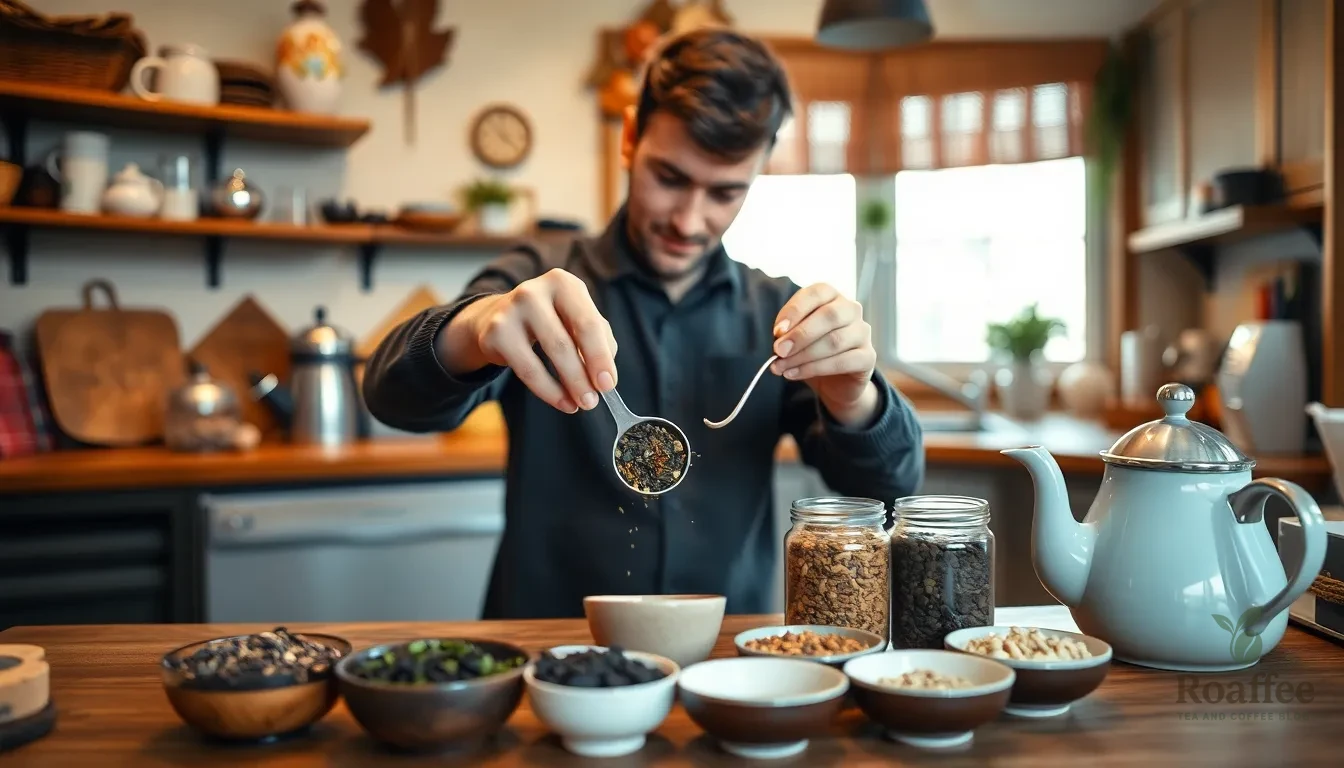
Now that we’ve covered the essential equipment and ingredients, let’s walk through the precise steps to brew the perfect cup of tea. Following these detailed instructions will ensure consistent results every time.
Step-by-Step Brewing Process
We begin by gathering our essential tools: loose tea leaves, a kettle, a teapot or infuser, and our cup. Heat water to the appropriate temperature based on your exact tea variety using the guidelines we’ve established.
Measure approximately 1 level teaspoon of tea leaves per 6 ounces of water, though some specialty teas may require slightly more. Pour the heated water over the tea leaves in your chosen brewing vessel.
Allow the tea to steep for the recommended time according to your tea type. Remove the leaves promptly after steeping to prevent over-extraction and bitterness. Your perfectly brewed tea is now ready to enjoy.
Timing Guidelines for Different Teas
We’ve compiled precise timing and temperature data to help you achieve optimal results for each tea variety:
| Tea Type | Amount of Tea | Water Temp (°F) | Steep Time |
|---|---|---|---|
| Black | 1 tsp / 6oz | 212 (full boil) | 3–5 min |
| Green | 1 tsp / 6oz | 175–180 | 1–2 min |
| White | 2 tsp / 6oz | 175–180 | 2–3 min |
| Oolong | 1 tsp / 6oz | ~195 | 2–3 min |
| Pu-erh | 1 heaping tsp | 212 (full boil) | 5 min |
| Purple | 1 heaping tsp | 175–180 | 3 min |
| Herbal | 1 heaping tsp | 212 (full boil) | 5+ min |
Understanding that steeper water accelerates infusion while cooler water allows longer steeping without bitterness helps us balance both time and temperature for optimal flavor extraction.
Proper Steeping Techniques
We recommend using loose leaf tea whenever possible for superior quality and flavor development. Avoid applying boiling water directly to delicate teas like green and white varieties to prevent unwanted bitterness.
Cover your teapot or cup during the steeping process to maintain consistent water temperature throughout extraction. Remove tea leaves immediately after the recommended steeping time to avoid over-extraction that can result in harsh flavors.
Experiment by tasting your results and adjusting steep time or temperature according to your personal preference. This approach allows you to fine-tune each brew until you achieve your perfect cup.
Advanced Brewing Techniques
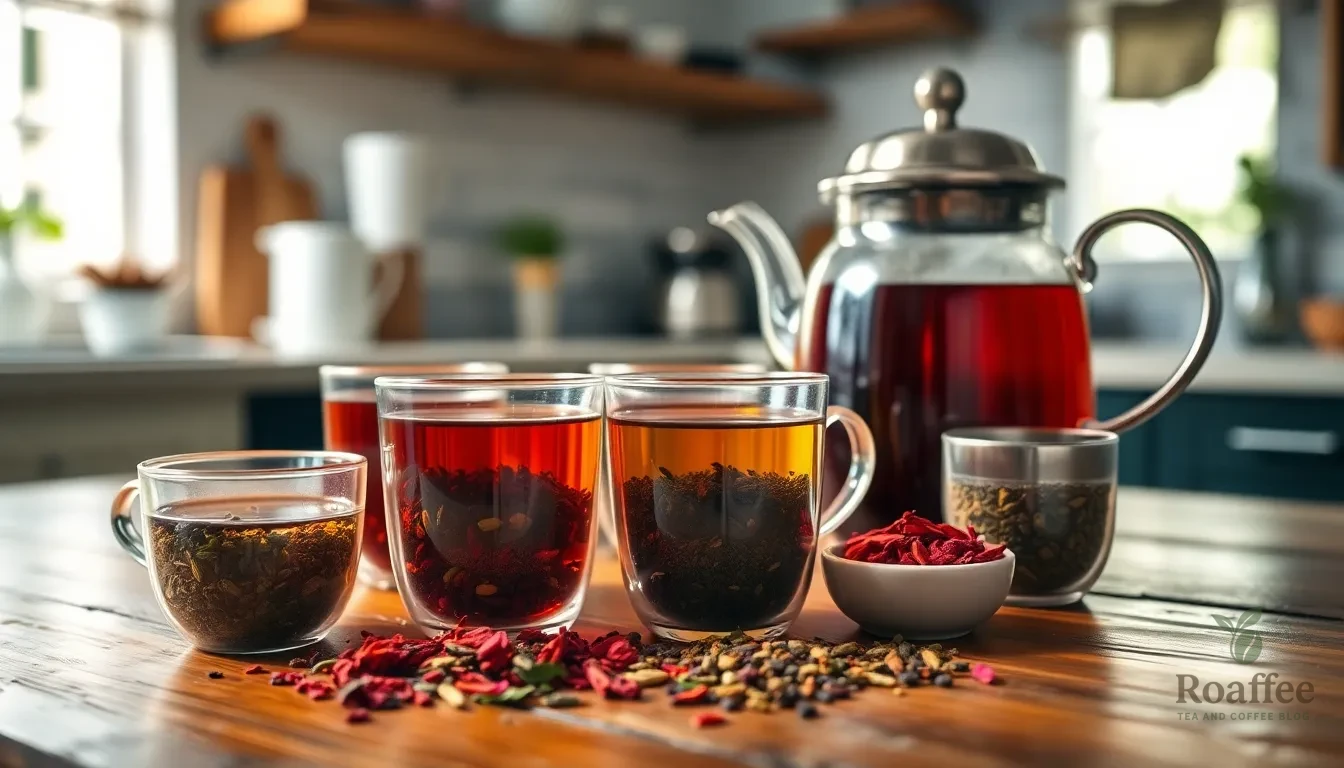
Once you’ve mastered the fundamentals of tea brewing, we can explore more sophisticated methods that unlock deeper flavors and create unique tea experiences. These advanced techniques allow us to extract maximum complexity from our tea leaves while discovering new ways to enjoy our favorite blends.
Multiple Infusion Method
The multiple infusion method involves steeping tea leaves repeatedly for shorter durations, gradually releasing different flavor profiles with each brew. This technique allows us to experience the full spectrum of flavors that quality tea leaves can offer, as each infusion reveals new taste notes and aromatic compounds.
We begin by using a higher ratio of tea to water than traditional Western brewing, typically 1 tablespoon of loose tea per 6 ounces of water. The first infusion lasts just 30 seconds to 1 minute, followed by subsequent steeps that gradually increase in duration. Each infusion extracts different elements from the tea leaves, creating a journey of evolving flavors.
Oolong and pu-erh teas particularly excel with this method, as their leaves unfurl slowly and release complex flavor compounds over multiple steeps. High-quality loose leaf teas can often provide 6-8 flavorful infusions, making this technique both economical and rewarding. The initial steeps tend to be lighter and more delicate, while later infusions become richer and more robust.
Cold Brewing Process
Cold brewing creates a fundamentally different tea experience by steeping loose tea leaves in cold water for 4-6 hours or overnight. This gentle extraction method produces a sweeter, less astringent tea compared to hot brewing, making it perfect for those who prefer smoother, more mellow flavors.
We recommend using a specialized cold brew bottle or pitcher with an infuser for the best results. The typical ratio is 1 teaspoon of tea per 6 ounces of cold water, though we can adjust this based on desired strength. After placing the tea in the infuser, we add cold water and refrigerate for the steeping period.
Fruit-forward and dessert-flavored teas work exceptionally well with cold brewing, as this method emphasizes their natural sweetness and aromatic qualities. Green teas, white teas, and herbal blends also produce excellent cold brews with bright, refreshing profiles. Once steeping is complete, we serve the tea chilled over ice, optionally adding milk, sparkling water, or spirits for creative variations.
Tea Blending Tips
Tea blending opens up endless possibilities for creating unique flavor profiles by mixing different teas or adding herbs, spices, and flavorings. The key to successful blending lies in achieving balance between the base tea and complementary ingredients.
We start with a strong base tea that can support additional flavors without being overwhelmed. Black teas work well as foundations for robust blends, while lighter teas like green or white varieties pair beautifully with delicate herbs and florals. Common blending additions include cinnamon, vanilla, dried fruit, jasmine flowers, and bergamot oil.
Experimentation is essential for developing our ideal taste and aroma combinations. We begin with small batches, testing different ratios until we achieve the desired flavor profile. Cold brew blends benefit from emphasizing fruity and floral notes, while hot brewing blends can handle stronger spices and deeper flavors.
The blending process requires careful attention to how different ingredients interact during steeping. Some additions, like dried fruit, release flavors slowly, while others, like essential oils, provide immediate impact. We adjust our blending ratios based on the intended brewing method and desired flavor intensity.
Common Tea Brewing Mistakes to Avoid
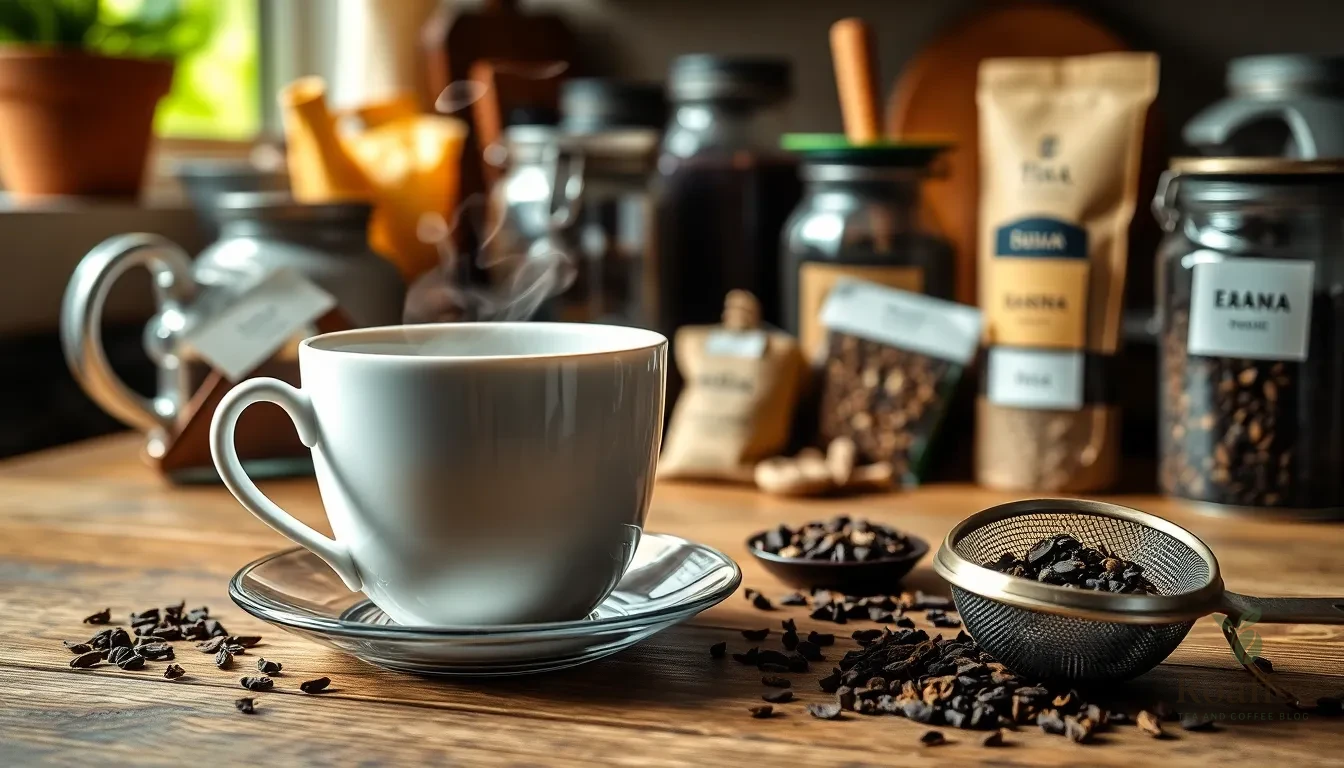
Even experienced tea enthusiasts sometimes make brewing errors that can completely transform a potentially perfect cup into a disappointing experience. Understanding these common pitfalls helps us avoid the frustration of bitter, weak, or otherwise flawed tea.
Over-Steeping Issues
Leaving tea to brew too long extracts excessive tannins, creating a bitter and astringent taste that overpowers the tea’s natural flavors. We recommend timing your steep carefully to prevent this common mistake that ruins many otherwise quality cups.
Different tea types require exact steeping durations for optimal flavor extraction:
| Tea Type | Steeping Time |
|---|---|
| Black tea | 3-5 minutes |
| Green tea | 1-2 minutes |
| White tea | 2-3 minutes |
| Oolong tea | 2-3 minutes |
| Pu-erh tea | 5 minutes |
| Herbal tea | 10-20 minutes |
Using a timer prevents over-steeping and ensures consistent results every time we brew. Once the steeping time completes, remove the tea leaves immediately to stop the extraction process and preserve the intended flavor profile.
Water Temperature Errors
Using incorrect water temperatures can either scorch delicate tea leaves or fail to extract the full flavor potential from your chosen tea. We must match water temperature to the exact tea type for optimal brewing results.
Water that is too hot burns delicate leaves like green and white teas, creating harsh and bitter flavors. Conversely, water that is too cool under-extracts the tea, resulting in weak and flavorless brews.
Essential temperature guidelines for different tea varieties:
| Tea Type | Water Temperature |
|---|---|
| Black tea | 212°F (full boil) |
| Green tea | 175-180°F |
| White tea | 175-180°F |
| Oolong tea | 195°F |
| Pu-erh tea | 212°F (full boil) |
| Herbal tea | 200°F or boiling |
Using a thermometer or temperature-controlled kettle helps achieve accurate temperatures consistently. This investment in proper equipment significantly improves our tea brewing success rate.
Improper Tea Storage
Exposure to air, moisture, heat, or strong odors causes tea leaves to lose their aroma and flavor rapidly. We must store tea properly to maintain freshness and prevent flavor degradation that ruins our brewing efforts.
Store tea leaves in airtight containers away from light, moisture, and strong odors to preserve their quality. Glass jars, tin canisters, or specialized tea storage containers work best for maintaining optimal conditions.
Avoid storing tea in the refrigerator or freezer, as temperature fluctuations and moisture can damage the leaves. Instead, keep containers in a cool, dry pantry or cupboard away from heat sources like stoves or direct sunlight.
Quality tea storage extends shelf life and ensures that each cup we brew delivers the full flavor potential we expect from our investment in premium tea leaves.
Serving and Presentation
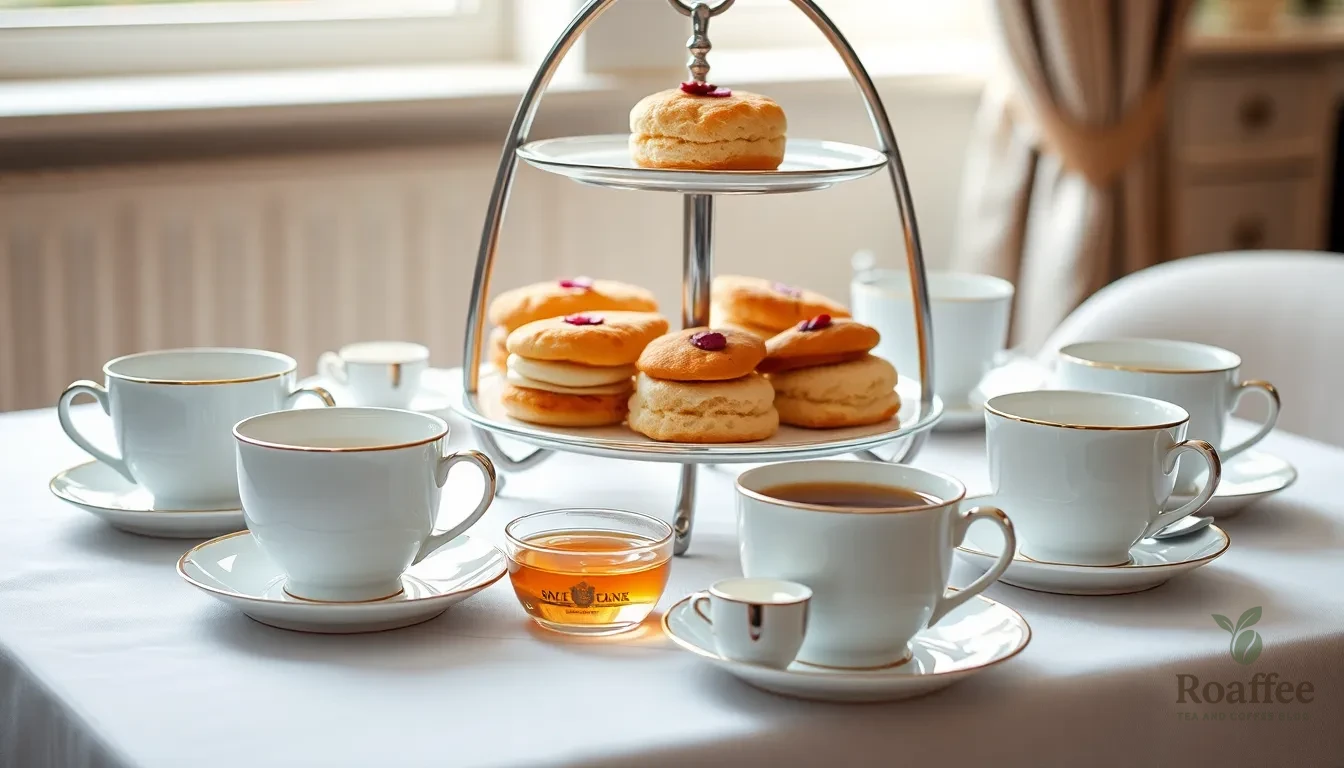
Once we’ve mastered the art of brewing tea, presenting it beautifully enhances the entire experience. Proper serving techniques and thoughtful presentation transform a simple tea break into an elegant occasion.
Tea Service Essentials
We recommend gathering the fundamental elements that create a complete tea service. Teacups with matching saucers provide the foundation for elegant presentation, while teaspoons allow guests to stir their tea properly. Small appetizer plates accommodate delicate accompaniments, and sugar and creamer sets offer customization options for each guest’s preferences.
Tiered serving trays elevate the presentation literally and figuratively, creating space for an array of treats including sandwiches, scones, and sweets. These multi-level displays maximize serving area while creating visual interest.
For table settings, we place one luncheon or salad plate per guest at each place setting. The utensil selection remains minimal, focusing primarily on teaspoons and knives for spreading toppings. Water glasses should be positioned above the knife, while teacups align to the right in a diagonal line from the plate.
We always provide clear instructions for guests about steeping times and temperatures for different tea varieties. This ensures optimal flavor extraction and prevents brewing mistakes that could diminish the tea experience.
| Tea Type | Temperature | Steeping Time |
|---|---|---|
| Black Tea | 208°F | ~5 minutes |
| Oolong Tea | 208°F | ~5 minutes |
| Herbal Tea | 208°F | ~5 minutes |
| Green Tea | 175°F | ~3 minutes |
| White Tea | 175°F | ~3 minutes |
Accompaniments and Pairings
Traditional accompaniments deserve careful consideration to complement rather than overpower the tea’s natural flavors. We serve honey, lemon curd or jam, cream, and sugar in small, elegant vessels that guests can easily access.
Light finger foods create the perfect partnership with tea service. Scones offer a classic foundation for spreads and creams, while delicate sandwiches provide savory balance. Pastries and sweets round out the selection, but we ensure they remain subtle enough to enhance rather than compete with the tea’s flavor profile.
The key lies in selecting accompaniments that support the tea’s characteristics. Delicate white and green teas pair beautifully with lighter offerings, while robust black teas can handle more substantial accompaniments. We arrange these items thoughtfully on serving trays, creating an inviting display that encourages guests to explore different flavor combinations.
Storage and Make-Ahead Tips

Proper storage and advance preparation techniques ensure your tea maintains its quality and flavor while saving time during busy periods. These methods help preserve the integrity of your tea leaves and create convenient brewing answers for everyday enjoyment.
Proper Tea Storage Methods
Store your tea away from light, moisture, odors, and heat to maintain optimal flavor and freshness. These four enemies of tea can quickly degrade the quality of even the finest leaves.
Airtight metal tins provide the best protection for most tea varieties. Stainless steel and tinplate containers block air effectively and slow the aging process that can diminish tea quality. These containers create an ideal environment for long-term storage.
Ceramic jars offer excellent protection from light and moisture while allowing gentle air exchange. This controlled environment aids in the natural aging process for certain teas like pu-erh and oolong varieties.
Additional storage options include colored glass bottles and purple clay pots, both of which provide adequate protection while maintaining the tea’s character. Avoid clear containers that expose tea to harmful light.
For delicate teas like green and yellow varieties, low-temperature storage at 0-5°C in sealed containers reduces oxidation and preserves delicate aromas. Refrigeration helps maintain the fresh, grassy notes that make these teas special.
Never store tea near foods or substances with strong odors. Tea leaves absorb surrounding aromas easily, which can contaminate and alter their intended flavor profiles.
Batch Brewing Guidelines
Scale your leaf and water amounts proportionally when making large quantities of tea using the same temperature and steeping time principles. This approach ensures consistent flavor across larger batches.
| Tea Type | Water Temperature | Steep Time | Amount per 6-8 oz |
|---|---|---|---|
| Black Tea | 212°F (100°C) | 3-5 minutes | 1 tsp |
| Green Tea | 175-180°F | 1-2 minutes | 1 tsp per 6 oz |
| White Tea | 175-180°F | 2-3 minutes | 2 tsp per 6 oz |
| Oolong Tea | 195°F | 2-3 minutes | 1 tsp |
| Herbal Teas | 212°F (100°C) | 5-6 minutes | 1 tsp |
Store brewed tea in sealed containers in the refrigerator immediately after brewing if not consuming right away. This prevents bacterial growth and maintains flavor integrity.
Batch brewed tea remains fresh for up to 3 days when properly refrigerated, though we recommend consuming it sooner for the best flavor experience. The quality begins to decline after the first day of storage.
Cold brew methods offer an alternative batch brewing technique that produces smoother, less astringent results. Steep tea leaves in cold water for 6-12 hours in the refrigerator to create refreshing beverages perfect for warm weather or those who prefer milder flavors.
Conclusion
We’ve covered everything you need to transform your tea brewing from ordinary to extraordinary. With the right equipment temperature control and timing techniques you’ll consistently create cups that showcase each tea’s unique character and depth.
Remember that great tea brewing is both an art and a science. The fundamentals we’ve shared provide your foundation but don’t be afraid to experiment and adjust based on your personal taste preferences.
Whether you’re brewing a simple morning cup or hosting an elegant tea service these techniques will serve you well. Start with quality ingredients follow the guidelines we’ve outlined and trust your palate to guide you toward your perfect brew.
Your journey to exceptional tea starts with your very next cup. Put these methods into practice and discover just how rewarding proper tea brewing can be.
Frequently Asked Questions
What water temperature should I use for different types of tea?
Black tea requires near-boiling water at 200°F (90°C-93°C), while green tea needs cooler water at 160-185°F (71-85°C). White tea should be brewed at around 185°F (85°C), and oolong tea requires hot water at 200°F (95°C or higher). Herbal teas need fully boiling water for optimal extraction.
How long should I steep different types of tea?
Black tea should steep for 3-5 minutes, green tea for 1-2 minutes, and white tea for 4-15 minutes. Oolong tea steeping times range from 1-9 minutes depending on the variety. Herbal teas typically need about 5 minutes of steeping to extract their full flavors and benefits.
What type of water is best for brewing tea?
Use fresh, filtered or artesian water for the best results. Avoid distilled water as it lacks minerals that enhance tea flavor, and avoid stale tap water with high chlorine levels. Bottled water can negatively affect taste and isn’t environmentally friendly. Water quality affects taste more than most people realize.
What equipment do I need for brewing great tea?
Essential equipment includes a quality tea infuser (basket infusers work well), a teapot made from ceramic, glass, cast iron, or stainless steel, and a method to control water temperature like an electric kettle with temperature settings or an instant-read thermometer. These tools ensure proper extraction and flavor development.
How do I prevent my tea from becoming bitter?
Avoid over-steeping by following recommended steeping times for each tea type. Use the correct water temperature – water that’s too hot can scorch delicate leaves. Remove tea leaves promptly after steeping, and don’t squeeze tea bags as this releases bitter compounds. Proper timing and temperature control are key.
Can I reuse tea leaves for multiple infusions?
Yes, especially with oolong and pu-erh teas. The multiple infusion method involves steeping tea leaves repeatedly for shorter durations, revealing different flavor profiles with each infusion. This technique is particularly effective for high-quality loose leaf teas and can create unique tasting experiences.
How should I store tea to maintain freshness?
Store tea in airtight containers away from light, moisture, odors, and heat. Metal tins work well for long-term storage, while ceramic jars are suitable for certain teas. Avoid refrigeration as it can introduce moisture and odors. Proper storage maintains tea quality and prevents flavor deterioration.
What’s the difference between cold brewing and hot brewing tea?
Cold brewing involves steeping tea in cold water for extended periods (usually 6-12 hours), producing a sweeter, less astringent tea with smoother flavors. Hot brewing uses heated water for shorter steeping times. Cold brewing is ideal for those who prefer milder flavors and works well in warm weather.








